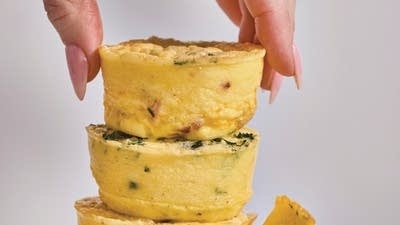
Too often peaches that look perfectly ripe and flavorful in the supermarket end up being hard, mealy or tasteless. Follow fruit expert David Karp's advice for buying and storing peaches to increase the odds of getting tender, fragrant fruit bursting with rich, sweet flavor.
1. A pretty red blush doesn't indicate ripeness. Instead, look for a background color at the stem end that's golden yellow or white, but not green. Store-bought peaches might be firm, but should not be rock hard.
2. Size makes little difference, though mid-sized peaches generally are best. If in doubt, ask for a sample, or buy one to taste.
3. Try to buy direct from farm stands, farmer's markets or, even better, go to a pick-your-own farm. It's no guarantee, but you'll get to know the best producers.
4. When you get peaches home, take them out of the container or plastic bag. Place them on the counter or, to hasten ripening, in a paper bag. Refrigerate only when necessary to prevent spoilage; refrigeration turns them dry and mealy after a few days. Peaches are ripe when they give slightly to a gently touch, and smell heavenly.
Clingstone and freestone peaches each have their own distinctive characteristics. Early-season peaches are usually clingstones, with pits that cling to the flesh. They are very juicy with a rubbery texture that makes them suitable for canning. Freestones have pits that are easily removed, a coarser and more fibrous texture than clingstones, and a richer flavor due to more time to develop on the tree. Freestones start a few weeks to a month later in various parts of the country.
Recommended Varieties and Special Favorites
Over 500 varieties of peaches are grown in America. The only way to know what you're buying is to look on the ends of the box or ask the farmer as retail markets rarely identify them, not wanting to confuse consumers. Peach trees live only 10 to 20 years and fashions change quickly, so each generation eats mostly new varieties. Elegant Lady and O'Henry are the biggest varieties by volume. But differences among modern varieties pale compared to the quantum leap from commercial to tree-ripened fruit. Other favorites include:
Ryan Sun
Indian Blood: From Washington State, available in September, these peaches are red all the way through, sweet, juicy, and have a raspberry-like flavor.
Iron Mountain: Native to New Jersey, this peach has pale green skin and flesh and matures in early October, very late for a peach. It's a bit dry, but incredibly sweet in a good year and excellent for cooking.
Selected bibliography for peaches
Childers, Norman F., and Wayne B. Sherman, editors. The Peach. Gainesville, Fla.: Horticultural Publications, 4th edn., 1988.
Hedrick, U.P. The Peaches of New York. Albany, 1917
Leroy, Andre. Dictionnaire de Pomologie, Tome VI. Paris, 1879
Before you go...
Each week, The Splendid Table brings you stories that expand your world view, inspire you to try something new, and show how food connects us all. We rely on your generous support. For as little as $5 a month, you can have a lasting impact on The Splendid Table. And, when you donate, you’ll join a community of like-minded individuals who love good food, good conversation, and kitchen companionship. Show your love for The Splendid Table with a gift today.
Thank you for your support.
Donate today for as little as $5.00 a month. Your gift only takes a few minutes and has a lasting impact on The Splendid Table and you'll be welcomed into The Splendid Table Co-op.



